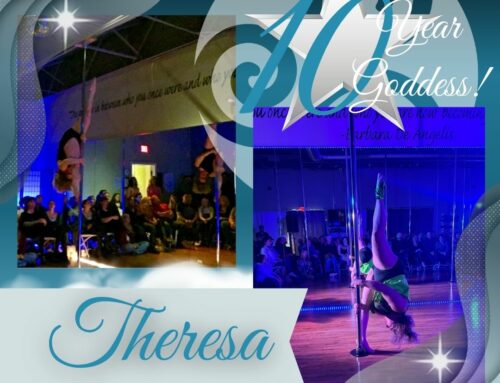Maybe you’re looking to finally get your splits. Or perhaps there’s a cool pole or aerial trick that you really want to nail but it requires a decent amount of flexibility. Or even more importantly, maybe you’re looking to improve your flexibility just to be more functional for everyday activities.
Flexibility is an important part of physical fitness. But what exactly is it?
Put simply, flexibility is the ability of soft tissues (such as muscles) to temporarily stretch when necessary, allowing a joint to move through its range of motion. Improved flexibility can help prevent injuries, back pain, and balance problems. Muscles that are well-stretched achieve the full range of motion much easier – which can improve athletic performance and functional abilities, such as reaching, bending, or stooping during daily tasks. Flexibility is an important part of mobility, which is the range of motion within a joint or a group of joints.
Here are some tips to keep in mind when you’re looking to improve your flexibility.
Work on your active flexibility.
Active flexibility involves maintaining an extended position or stretch without the help of an external force. The strength of the muscles are responsible for achieving the stretch. One muscle group contracts and engages while the opposing group releases and elongates.
Working on your active flexibility is important to help prevent injury. It gives you the strength to maintain stability in your joints. There is also less of a chance of overstretching when doing active stretches since you are using your muscles to control your position. Active stretching helps you to gain control in your flexibility.
An example of an active stretch is to lift one leg up as high as you can and hold it there in the extended position. You’re only relying on your own muscles to keep the leg up. This is much more difficult than passive stretching, as the resistance of the muscles that are elongating (the antagonist muscles) must be overcome by the strength of the muscles that are contracting (the agonist muscles). Active stretches are generally only held for around 10-15 seconds.
Keep passive stretching for the end of your workout session.
Passive flexibility is the range of motion that you can achieve when an external force is helping out (such as gravity, a band, or another person). Doing the splits on the floor is an example of passive stretching.
Passive stretching can allow us to gain a wider range of motion. However, there is a greater risk of overstretching, potentially resulting in injury. Make sure that you’re thoroughly warmed up before doing any static, passive stretching.
Warming up helps to prepare your body for activity. It raises your body temperature and increases the blood flow to your muscles, reducing the risk of injury. According to the Mayo Clinic, warm up with at least 5-10 minutes of light activity. Or, even better, stretch after a workout session when you’re already warm.
When you’re holding a passive stretch, be sure to listen to your body. A little bit of discomfort is okay, but if you feel any pain, you’ve gone too far and should back out of the stretch.
Don’t compare yourself to others.
Everyone’s body is built differently and everyone has a different level of flexibility. Don’t compare your progress to others.
Flexibility is just one piece of how a joint moves. You can have great flexibility, but still have not much mobility. This is due to other factors that limit joint mobility, such as the shape of the joint, the presence of bony structures, and how the ligaments and tendons connect to the bones. It may or may not be possible for you to ever get into a particular pose – and that is totally okay.
“Different people have different bone structures, so nobody is going to feel the same stretch the exact same way, and not everyone is going to naturally have the same range of motion and that’s okay,” says Tiffany Cruikshank, founder of Yoga Medicine. “The most important part is that you are taking the time to stretch, and that you maintain that sense of elasticity and pliability in the muscles.”
Looking for more guidance on exercises and stretches to help improve your flexibility? Check out Around the Bend! Each class will explore dynamic and static stretches as well as strength training to help you meet your flexibility goals. View the class schedule.
Sources:
https://www.mayoclinic.org/healthy-lifestyle/fitness/multimedia/stretching/sls-20076840?s=1
https://www.health.harvard.edu/staying-healthy/benefits-of-flexibility-exercises


